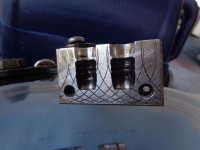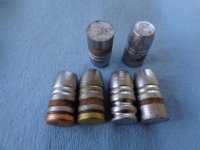Hey everyone, I'm posting here as a last resort as I couldn't find any definitive info, I would be grateful if someone here can set me straight.
I'm re-barreling a model 629 .44 magnum revolver and was given a Douglas blank marked as 44 mag, 1:14 twist (checked the twist myself to confirm). From what I've gathered, 1:16, 1:18, 1:18 3/4, and 1:20 are the industry standards, and I haven't found much info on this blank (Douglas doesn't even list 44 mag on their site, and I haven't had a chance to call and ask). I know Shilen has 1:16 and 1:20 blanks, but I'd prefer to use this blank as it was free
 .
.
My thought is a faster twist rate is better for heavier/longer bullets, and in my research I've tried JBM's ballistic calculator and a few others sites. My worry is that 1:14 is too fast and will over-stabilize the bullet, or perhaps if over-stabilization isn't much of an issue, then jacket separation.
Can anyone here tell me:
1. Is 1:14 too quick?
2. If it's good to go, am I restricted to heavier grain bullets?
3. Is there something else I'm not considering?
4. What .44 mag firearm uses a 1:14 twist? It seems very uncommon...
Thanks in advance guys
I'm re-barreling a model 629 .44 magnum revolver and was given a Douglas blank marked as 44 mag, 1:14 twist (checked the twist myself to confirm). From what I've gathered, 1:16, 1:18, 1:18 3/4, and 1:20 are the industry standards, and I haven't found much info on this blank (Douglas doesn't even list 44 mag on their site, and I haven't had a chance to call and ask). I know Shilen has 1:16 and 1:20 blanks, but I'd prefer to use this blank as it was free
My thought is a faster twist rate is better for heavier/longer bullets, and in my research I've tried JBM's ballistic calculator and a few others sites. My worry is that 1:14 is too fast and will over-stabilize the bullet, or perhaps if over-stabilization isn't much of an issue, then jacket separation.
Can anyone here tell me:
1. Is 1:14 too quick?
2. If it's good to go, am I restricted to heavier grain bullets?
3. Is there something else I'm not considering?
4. What .44 mag firearm uses a 1:14 twist? It seems very uncommon...
Thanks in advance guys


